Pearl Zhu's Blog, page 1305
August 20, 2016
The Monthly Innovation Brief: Innovation Measurement Aug 2016
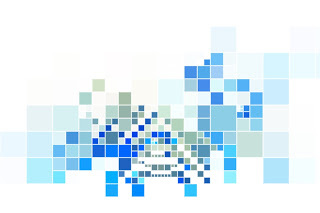 Innovation takes a cycle of observing-questioning-connecting-networking-experimenting. From a management perspective, innovation is how to transform novel ideas to achieve its business value, due to the hyper-complexity of modern business, innovation is essentially about reducing the unnecessary business complexity to tackle the complexities of business dynamic. Here is a series of blogs to brainstorm the practices and pitfalls of innovation management.
Innovation takes a cycle of observing-questioning-connecting-networking-experimenting. From a management perspective, innovation is how to transform novel ideas to achieve its business value, due to the hyper-complexity of modern business, innovation is essentially about reducing the unnecessary business complexity to tackle the complexities of business dynamic. Here is a series of blogs to brainstorm the practices and pitfalls of innovation management.
Innovation MeasurementAn Innovator’s Scoreboard? Innovation is about transforming novel ideas into business values. Innovation score means an attempt to measure innovation; so the factors included in any scoring system will depend on what you are looking to evaluate (individual vs. organization? potential vs. past performance?), this is usually done through innovation indicators. What’re the pros and cons of measuring innovation and score innovators?
Three Challenging Aspects of KPIs? You can only manage what you measure, metrics & KPI (Key Performance Indicator) management is not a simple task, though, approximately there’re .ore tan 10, 000 KPIs around today, a bit overwhelming, let's not forget that there is a "K" in KPI for a reason, what’re the most challenging aspects of working with KPIs?
How to Assess and Improve Innovation Management Maturity For many organizations, innovations are still serendipitous. However, serendipity can be planned into an innovation project. Serendipity is not a lucky accident, and it can be planned and worked upon. Has a lot of determination and divine providence for those who believe in that. Serendipity will always play some part in the innovation effort, but innovation is both art and science, Innovation Management is a scientific management discipline, how do you assess innovation management maturity, though?
How to Maximize the Returns on IT Innovations? Businesses today face fiery competition and rapid digital shift either technologically or economically, most of the organizations are focusing on improving margins by reducing the bottom-line cost rather than top-line growth; as innovation and risk are proportional, improving efficiency takes a little creativity and risk, while working on innovation effort usually takes higher risks and creativity. Still, forward-looking companies will spend more resource on innovation investment in order to reap the fruit for out beating competitors and gaining long term advantage. So the question is how to maximize returns on innovation, specifically, IT innovations, as overall IT project has much lower success rate than other business initiatives?
Shall you Assess Talent's 'Creatibility'? Traditional performance management in most of the organizations usually focuses on measuring employees’ efficiency: are they doing what being told to do well. However, with increasing competition and emergent business changes, should organizations today also assess their talent from innovation angle, in order to cultivate a culture of innovation and improve business competency, if so, HOW, what’re the technique or best practices can be shared
 The “Future of CIO” Blog has reached 1.5 million page views with about 3000+ blog posting in 59+ different categories of leadership, management, strategy, digitalization, change/talent, etc. The content richness is not for its own sake, but to convey the vision and share the wisdom. Blogging is not about writing, but about thinking; it’s not just about WHAT to say, but about WHY to say, and HOW to say it. It reflects the color and shade of your thought patterns, and it indicates the peaks and curves of your thinking waves. Unlike pure entertainment, quality and professional content takes time for digesting, contemplation and engaging, and therefore, it takes the time to attract the "hungry minds" and the "deep souls." It’s the journey to amplify your voice, deepen your digital footprints, and match your way for human progression.Follow us at: @Pearl_Zhu
The “Future of CIO” Blog has reached 1.5 million page views with about 3000+ blog posting in 59+ different categories of leadership, management, strategy, digitalization, change/talent, etc. The content richness is not for its own sake, but to convey the vision and share the wisdom. Blogging is not about writing, but about thinking; it’s not just about WHAT to say, but about WHY to say, and HOW to say it. It reflects the color and shade of your thought patterns, and it indicates the peaks and curves of your thinking waves. Unlike pure entertainment, quality and professional content takes time for digesting, contemplation and engaging, and therefore, it takes the time to attract the "hungry minds" and the "deep souls." It’s the journey to amplify your voice, deepen your digital footprints, and match your way for human progression.Follow us at: @Pearl_Zhu
Published on August 20, 2016 23:39
The “Talent Master” Book Quote Collection II
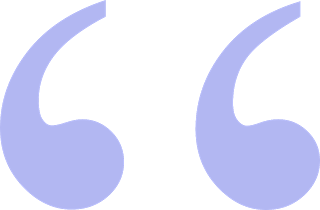 32. Creativity needs a problem, and a creative person needs a purpose. 33. “Out of Box” is a metaphor that means to think differently, unconventionally, or from a new perspective. 34 People who can solve problems in a new way are the innovators. 35 Ingenuity is the ability to solve difficult problems, often in an original and creative way. 36. Intuition matters but pay more attention to the unconscious bias.38. A vision is a future state of being.39 An individual’s agility is a fundamental digital capability block through which she or he can build more advanced professional capabilities and better fit in the digital dynamic we live in. 40 Inclusiveness will be the mantra of the future.41 Innovation is a progress, and progress in simplicity.42. Every person is unique, put the right people with the right capability to the right position to solve the right problems. 43 Passion is a strong emotion and the enthusiasm to do something.44. Innovators are at their very heart visionaries who also have determination, dedication, passion and motivation.45. Unprofessionalism damages the business reputation and tarnishes the trust of society.
32. Creativity needs a problem, and a creative person needs a purpose. 33. “Out of Box” is a metaphor that means to think differently, unconventionally, or from a new perspective. 34 People who can solve problems in a new way are the innovators. 35 Ingenuity is the ability to solve difficult problems, often in an original and creative way. 36. Intuition matters but pay more attention to the unconscious bias.38. A vision is a future state of being.39 An individual’s agility is a fundamental digital capability block through which she or he can build more advanced professional capabilities and better fit in the digital dynamic we live in. 40 Inclusiveness will be the mantra of the future.41 Innovation is a progress, and progress in simplicity.42. Every person is unique, put the right people with the right capability to the right position to solve the right problems. 43 Passion is a strong emotion and the enthusiasm to do something.44. Innovators are at their very heart visionaries who also have determination, dedication, passion and motivation.45. Unprofessionalism damages the business reputation and tarnishes the trust of society.
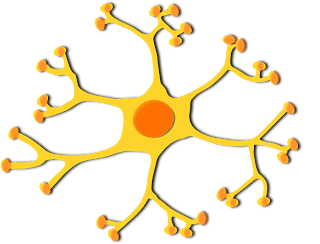 46. High professionalism is crucial characteristic to influence organizational culture.47. Positive Thinking and creativity are the powerful pairs to push the world forward.48 Decision power is knowledge-based, wisdom-driven and character-oriented.49. Fairness is one of the most significant traits in wisdom, the fairer you are, the wiser you become.50. Self-discipline is about disciplined thoughts.
46. High professionalism is crucial characteristic to influence organizational culture.47. Positive Thinking and creativity are the powerful pairs to push the world forward.48 Decision power is knowledge-based, wisdom-driven and character-oriented.49. Fairness is one of the most significant traits in wisdom, the fairer you are, the wiser you become.50. Self-discipline is about disciplined thoughts.51 High-quality professions look decently, think profoundly, and act thoughtfully.Follow us at: @Pearl_Zhu
Published on August 20, 2016 23:34
"Leadership Master" Book Tuning: Three Insight about Top Leadership
Top leaders today need to be both “experts” and “explorers,” to improve leadership effectiveness and amplify leadership influence.
 At today’s digital new normal with increasing speed of change and unprecedented uncertainty and ambiguity, the leadership bar is indeed raised higher. Because top digital leaders today must have a clear vision to navigate the uncharted water and blurred business territories, they also need to have the creativity to discover the better way of doing things with the in-depth understanding of solving problems thoroughly. So who are top leaders today? How to differentiate transformative leaders from transactional managers? How to differentiate senior leaders from junior leaders? Is wisdom always proportional with age? What are the most important differences between top digital leaders and others? And what are further insight about top leadership?
At today’s digital new normal with increasing speed of change and unprecedented uncertainty and ambiguity, the leadership bar is indeed raised higher. Because top digital leaders today must have a clear vision to navigate the uncharted water and blurred business territories, they also need to have the creativity to discover the better way of doing things with the in-depth understanding of solving problems thoroughly. So who are top leaders today? How to differentiate transformative leaders from transactional managers? How to differentiate senior leaders from junior leaders? Is wisdom always proportional with age? What are the most important differences between top digital leaders and others? And what are further insight about top leadership?
Top leaders need to be constantly VISIBLE via sharing VISION and enabling others to share it: Vision is not the “Nice to have,” but “Must have” quality for top leaders today in order to direct the organization forward in today’s “VUCA” digital dynamic. Leadership is all about future and change. Leadership vision is to serve as an enabler to make profound influences, to clear the path, whether that be the elimination of obstacles or to provide coaching and guidance. Every C-level leader must participate in creating and shaping a company's vision. A visionary changes the course of business by seeing beyond what all other see or by charting new revenue or growth through the creation of a new product or market; or share their perception of future trends of business such as digitalization, innovation, or globalization. Here are three dot-connections in leadership vision. They are able to not only articulate the vision, but communicate it in various forms and forums, including investor relations, business partners, or customers, and employees. In the senior position, top leaders stay on strategic focus rather than just the tactical details. Vision is indeed crucial, the leaders need to observe, perceive, and pay attention to the myriad of internal, external, national or global forces that define and influence the way we do business these days. As top leaders, you need to see further, but be practical as well via taking the step-wise approach for reaching it steadfastly.
At today’s digital dynamic, perhaps top leaders need to be both “experts” and “explorers”: At the top level, you need to be broad, also stay focused in order to craft good strategies and develop innovation practice via interdisciplinary dot connections. To lead in today’s digital dynamic, often you must have the discernment to identify the signal from a lot of background noises; and you need to capture insight from the sea of overwhelming information. With the border between different functions or disciplines continues blurring, the specialized generalists are in strong demand, or we normally call the “T-Shape” talent. The T metaphor was not made to tell us how much we know about something or how many areas we know about. It was made instead to illustrate a predisposition to diversify our focus or not. Usually, we are either "experts" or "explorers. But for top leaders, you need master both in order to be open-minded for exploring new opportunities, but also building solid knowledge and expertise, not only for gaining respect but also for leading effectively. Top leaders need strong interpersonal and communication and collaboration skills in order to build innovative teams, with quality like resilience, empathy, metacognition, critical thinking, relationship building, agility, or brainstorming.
 Top leaders today must have the ability to make sound judgment and effective decisions, especially at strategic level: Due to the complexity, uncertainty, interdependence, and ever-changing business dynamic, sound judgment is a hardcore competency which often does not just come from “gut feeling,” but based on updated information, solid knowledge and decision wisdom, as well as the humble attitude to learn, de-learn and relearn all the time, to put simply, learning agility. The top leadership roles need to spend significant time on making both strategic and tactical decisions on the daily basis. You need to be deep, not necessary means narrow, in order to make sound judgments. In order to make effective decisions, it is more important for senior executives to frame the right questions than hunting for the right answers. Hence, decision wisdom is based on integral thought processes which include a multitude of thinking abilities, such as critical thinking, creative thinking, analytics, synthesis, systems thinking, etc.
Top leaders today must have the ability to make sound judgment and effective decisions, especially at strategic level: Due to the complexity, uncertainty, interdependence, and ever-changing business dynamic, sound judgment is a hardcore competency which often does not just come from “gut feeling,” but based on updated information, solid knowledge and decision wisdom, as well as the humble attitude to learn, de-learn and relearn all the time, to put simply, learning agility. The top leadership roles need to spend significant time on making both strategic and tactical decisions on the daily basis. You need to be deep, not necessary means narrow, in order to make sound judgments. In order to make effective decisions, it is more important for senior executives to frame the right questions than hunting for the right answers. Hence, decision wisdom is based on integral thought processes which include a multitude of thinking abilities, such as critical thinking, creative thinking, analytics, synthesis, systems thinking, etc.
Top leaders go beyond a senior title, they are the leaders who should build a far-sighted vision, represent the overall quality of leadership, set digital tones for talent management, make a sound judgment, empower changes, inspire innovation, they are both curious explorers and dedicated faster learners. Because, the advancement of their mindset will significantly impact the destination and the speed of digital transformation.
"Digital Master" Book Series Slideshare Introduction "
Leadership Master" Introduction Slideshare Presentation
"Leadership Master" Introduction Blog
"Leadership Master" Chapter I Introduction
"Leadership Master" Chapter II Introduction
"Leadership Master" Chapter III Introduction
"Leadership Master" Chapter IV Introduction "
Leadership Master" Chapter V Introduction
"Leadership Master" Amazon Order Link
" Leadership Master " B&N Order Link
" Leadership Master " IBook Order Link
Follow us at: @Pearl_Zhu
 At today’s digital new normal with increasing speed of change and unprecedented uncertainty and ambiguity, the leadership bar is indeed raised higher. Because top digital leaders today must have a clear vision to navigate the uncharted water and blurred business territories, they also need to have the creativity to discover the better way of doing things with the in-depth understanding of solving problems thoroughly. So who are top leaders today? How to differentiate transformative leaders from transactional managers? How to differentiate senior leaders from junior leaders? Is wisdom always proportional with age? What are the most important differences between top digital leaders and others? And what are further insight about top leadership?
At today’s digital new normal with increasing speed of change and unprecedented uncertainty and ambiguity, the leadership bar is indeed raised higher. Because top digital leaders today must have a clear vision to navigate the uncharted water and blurred business territories, they also need to have the creativity to discover the better way of doing things with the in-depth understanding of solving problems thoroughly. So who are top leaders today? How to differentiate transformative leaders from transactional managers? How to differentiate senior leaders from junior leaders? Is wisdom always proportional with age? What are the most important differences between top digital leaders and others? And what are further insight about top leadership?
Top leaders need to be constantly VISIBLE via sharing VISION and enabling others to share it: Vision is not the “Nice to have,” but “Must have” quality for top leaders today in order to direct the organization forward in today’s “VUCA” digital dynamic. Leadership is all about future and change. Leadership vision is to serve as an enabler to make profound influences, to clear the path, whether that be the elimination of obstacles or to provide coaching and guidance. Every C-level leader must participate in creating and shaping a company's vision. A visionary changes the course of business by seeing beyond what all other see or by charting new revenue or growth through the creation of a new product or market; or share their perception of future trends of business such as digitalization, innovation, or globalization. Here are three dot-connections in leadership vision. They are able to not only articulate the vision, but communicate it in various forms and forums, including investor relations, business partners, or customers, and employees. In the senior position, top leaders stay on strategic focus rather than just the tactical details. Vision is indeed crucial, the leaders need to observe, perceive, and pay attention to the myriad of internal, external, national or global forces that define and influence the way we do business these days. As top leaders, you need to see further, but be practical as well via taking the step-wise approach for reaching it steadfastly.
At today’s digital dynamic, perhaps top leaders need to be both “experts” and “explorers”: At the top level, you need to be broad, also stay focused in order to craft good strategies and develop innovation practice via interdisciplinary dot connections. To lead in today’s digital dynamic, often you must have the discernment to identify the signal from a lot of background noises; and you need to capture insight from the sea of overwhelming information. With the border between different functions or disciplines continues blurring, the specialized generalists are in strong demand, or we normally call the “T-Shape” talent. The T metaphor was not made to tell us how much we know about something or how many areas we know about. It was made instead to illustrate a predisposition to diversify our focus or not. Usually, we are either "experts" or "explorers. But for top leaders, you need master both in order to be open-minded for exploring new opportunities, but also building solid knowledge and expertise, not only for gaining respect but also for leading effectively. Top leaders need strong interpersonal and communication and collaboration skills in order to build innovative teams, with quality like resilience, empathy, metacognition, critical thinking, relationship building, agility, or brainstorming.
 Top leaders today must have the ability to make sound judgment and effective decisions, especially at strategic level: Due to the complexity, uncertainty, interdependence, and ever-changing business dynamic, sound judgment is a hardcore competency which often does not just come from “gut feeling,” but based on updated information, solid knowledge and decision wisdom, as well as the humble attitude to learn, de-learn and relearn all the time, to put simply, learning agility. The top leadership roles need to spend significant time on making both strategic and tactical decisions on the daily basis. You need to be deep, not necessary means narrow, in order to make sound judgments. In order to make effective decisions, it is more important for senior executives to frame the right questions than hunting for the right answers. Hence, decision wisdom is based on integral thought processes which include a multitude of thinking abilities, such as critical thinking, creative thinking, analytics, synthesis, systems thinking, etc.
Top leaders today must have the ability to make sound judgment and effective decisions, especially at strategic level: Due to the complexity, uncertainty, interdependence, and ever-changing business dynamic, sound judgment is a hardcore competency which often does not just come from “gut feeling,” but based on updated information, solid knowledge and decision wisdom, as well as the humble attitude to learn, de-learn and relearn all the time, to put simply, learning agility. The top leadership roles need to spend significant time on making both strategic and tactical decisions on the daily basis. You need to be deep, not necessary means narrow, in order to make sound judgments. In order to make effective decisions, it is more important for senior executives to frame the right questions than hunting for the right answers. Hence, decision wisdom is based on integral thought processes which include a multitude of thinking abilities, such as critical thinking, creative thinking, analytics, synthesis, systems thinking, etc.
Top leaders go beyond a senior title, they are the leaders who should build a far-sighted vision, represent the overall quality of leadership, set digital tones for talent management, make a sound judgment, empower changes, inspire innovation, they are both curious explorers and dedicated faster learners. Because, the advancement of their mindset will significantly impact the destination and the speed of digital transformation.
"Digital Master" Book Series Slideshare Introduction "
Leadership Master" Introduction Slideshare Presentation
"Leadership Master" Introduction Blog
"Leadership Master" Chapter I Introduction
"Leadership Master" Chapter II Introduction
"Leadership Master" Chapter III Introduction
"Leadership Master" Chapter IV Introduction "
Leadership Master" Chapter V Introduction
"Leadership Master" Amazon Order Link
" Leadership Master " B&N Order Link
" Leadership Master " IBook Order Link
Follow us at: @Pearl_Zhu
Published on August 20, 2016 23:31
Three Insight about Top Leadership
 At today’s digital new normal With increasing speed of change and unprecedented uncertainty and ambiguity, the leadership bar is indeed raised higher. Because top digital leaders today must have a clear vision to navigate the uncharted water and blurred business territories, they also need to have the creativity to discover the better way of doing things and in-depth understanding for solving problems thoroughly. So who are top leaders today? How to differentiate transformative leaders from transactional managers? How to differentiate senior leaders from junior leaders? Is wisdom always proportional with age? What are the most important differences between top digital leaders and others? And what are further insight about top leadership?
At today’s digital new normal With increasing speed of change and unprecedented uncertainty and ambiguity, the leadership bar is indeed raised higher. Because top digital leaders today must have a clear vision to navigate the uncharted water and blurred business territories, they also need to have the creativity to discover the better way of doing things and in-depth understanding for solving problems thoroughly. So who are top leaders today? How to differentiate transformative leaders from transactional managers? How to differentiate senior leaders from junior leaders? Is wisdom always proportional with age? What are the most important differences between top digital leaders and others? And what are further insight about top leadership?
Top leaders need to be constantly VISIBLE via sharing VISION and enabling others to share it: Vision is not the “Nice to have,” but “Must have” quality for top leaders today in order to direct the organization toward the uncharted water in today’s “VUCA” digital dynamic. Leadership is all about future and change. Leadership vision is to serve as an enabler to make profound influences, to clear the path, whether that be the elimination of obstacles or to provide coaching and guidance. Every C-level leader must participate in creating and shaping a company's vision. A visionary changes the course of business by seeing beyond what all other see or by charting new revenue or growth through the creation of a new product or market; or share their perception of future trends of business such as digitalization, innovation, or globalization. Here are three dot-connections in leadership vision. They are able to not only articulate the vision, but communicate it in various forms and forums, including investor relations, business partners, or customers, and employees. In the senior position, stay on strategic focus rather than the tactical details.Vision is indeed crucial, the leaders need to observe, perceive, and pay attention to the myriad of internal, external, national or global forces that define and influence the way we do business these days. As top leaders, you need to see further, but be practical as well via taking the step-wise approach for reaching it steadfastly.
At today’s digital dynamic, perhaps top leaders need to become both “experts” and “explorers”: At the top level, you need to be broad, also stay focused in order to craft good strategies and practice innovation via interdisciplinary dot connections. To lead in today’s digital dynamic, often you must have the discernment to identify the signal from a lot of background noises; and you need to capture insight from the sea of overwhelming information. With the border between different functions or disciplines continues blurring, the specialized generalists are in strong demand, or we normally call the “T-Shape” talent. The T metaphor was not made to tell us how much we know about something or how many areas we know about. It was made instead to illustrate a predisposition to diversify our focus or not. Usually, we are either "experts" or "explorers. But for top leaders, you need master both in order to be open-minded for exploring new opportunities, but also building solid knowledge and expertise, not only for gaining respect but also for leading effectively. Top leaders also need strong interpersonal and communication and collaboration skills in order to build innovative teams, with quality like resilience, empathy, metacognition, critical thinking, relationship building, agility, or brainstorming.
 Top leaders today must have the ability to make sound judgment and effective decisions, especially at strategic level: Due to the complexity, uncertainty, interdependence, and ever-changing business dynamic, sound judgment is a hardcore competency which often does not just come from “gut feeling,” but based on updated information, solid knowledge and decision wisdom, as well as the humble attitude to learn, de-learn and relearn all the time, to put simply, learning agility. The top leadership roles need to spend significant time on making both strategic and tactical decisions on the daily basis.You need to be deep, not necessary means narrow, in order to make sound judgments. In order to make effective decisions, it is more important for senior executives to frame the right questions than hunting for the right answers. Hence, decision wisdom is based on integral thought processes which include a multitude of thinking abilities, such as critical thinking, creative thinking, analytics, synthesis, systems thinking, etc.
Top leaders today must have the ability to make sound judgment and effective decisions, especially at strategic level: Due to the complexity, uncertainty, interdependence, and ever-changing business dynamic, sound judgment is a hardcore competency which often does not just come from “gut feeling,” but based on updated information, solid knowledge and decision wisdom, as well as the humble attitude to learn, de-learn and relearn all the time, to put simply, learning agility. The top leadership roles need to spend significant time on making both strategic and tactical decisions on the daily basis.You need to be deep, not necessary means narrow, in order to make sound judgments. In order to make effective decisions, it is more important for senior executives to frame the right questions than hunting for the right answers. Hence, decision wisdom is based on integral thought processes which include a multitude of thinking abilities, such as critical thinking, creative thinking, analytics, synthesis, systems thinking, etc.
Top leaders go beyond a senior title, they are the leaders who should build a far-sighted vision, represent the overall quality of leadership, set digital tones for talent management, make a sound judgment, empower changes, inspire innovation, they are both curious explorers and dedicated faster learners. Because, the advancement of their mindset will significantly impact the destination and the speed of digital transformation,
Follow us at: @Pearl_Zhu
Published on August 20, 2016 23:31
Three Portmanteau Hybrid Words to Envision a Digital Organization
 Organizations large or small are on the journey to digital transformation, it is not an overnight phenomenon, but a well-planning strategy with the step-wise approach. There are physical working buildings and virtual, always working environment; there’re next innovation practices and “always do things like this” best practices; there’s abundance of information but still the scarcity of insight. It is the hybrid business world full of options. Digital is the age of alternatives, Here are three portmanteau hybrid words to convey the management principles for running a digital organization.
Organizations large or small are on the journey to digital transformation, it is not an overnight phenomenon, but a well-planning strategy with the step-wise approach. There are physical working buildings and virtual, always working environment; there’re next innovation practices and “always do things like this” best practices; there’s abundance of information but still the scarcity of insight. It is the hybrid business world full of options. Digital is the age of alternatives, Here are three portmanteau hybrid words to convey the management principles for running a digital organization.
Inclusivesity: This is a portmanteau word of mixing two words: “inclusiveness” and “diversity.” Today’s digital workforce is multigenerational, multicultural, and multidevicing. Many large multinational organizations have certain “diversity” best practices. However, if inclusiveness is not embedded into your business, sometimes, such practices even divide your workplace or try to fix the symptom and cause more serious problems for the long term. In conventional mind, people think diversity is only about race or gender. If you categorize people on any surface criteria - then you are putting them in silos, or type-casting, and setting up boundaries and hurdles. Therefore, inclusiversity is the mantra to build a culture of creativity. An inclusiversity mind tries to focus on cognition, behavioral and skill diversity and ensure there are cogitative difference and talent diversity on the team in order to spark creativity. By openly seeking to develop that, it balances without causing a huge issue over other kinds of diversity. If you start from a point of, "We are all different - with different gifts and skills" then the opportunities open up - not close down. Take a holistic approach with “inclusiversity” means creating a work environment where all employees can reach their full potential, it's something an organization must work on continuously. Also, deal with stereotypes by showing people that even two people within the same family can be different, hence it is wrong to stereotype against a whole population of a particular group. The key is to embed the concepts and practical application, etc. into everything within the organization ranging from all people practices to engaging with the customer's community, partners, etc. The goal is to build a culture from top-down, where diversity of the thought and inclusion of mind are believed by "the people" as both necessary and vital to individual and collective success. If this is truly done, the results should follow--but it takes the time to help employees discover “authentic self” and have leaders to do self-reflection as well. Creativity will be blossom and employee satisfaction will be improved when inclusiversity is truly woven into the culture of the organization instead of a program or initiative.
Creanalytics: A high mature digital organization is both high- intelligent and high-inoovative. Hence, the other portmanteau word “Creanalytics” is the combination of two words “Creativity” and “Analytics.” Digital means the explosive data and overwhelming information, but often in most organizations today, they are information rich, but insight poor. Analytics is a multi-faceted discipline that helps businesses to abstract business insight via systematically managing information lifecycle effectively and make sure people getting the right information to make right decisions timely, ultimately the organization becomes high-intelligent. On the other side, or paradoxically, digital businesses need to become more innovative and build a set of unique capabilities to thrive due to fierce competitions and increasing the speed of changes. At the individual level, “Creanalytics” is also an important, hybrid, or recombinant capability for today’s high professionals as well. Almost every job needs some level of analytics and creativity in modern society. You need to master them via practicing whole brain thinking and structural problem-solving.
 Simplexity: This portmanteau word well-describes the digital new normal philosophically. Either at individual or business level, we should follow the “simplicity” principle to handle the overcomplex digital reality with “VUCA” characteristics -Velocity, Uncertainty, Complexity, and Ambiguity. Considering there is no universally agreed definition of complexity, in the corporate scope, there are hierarchical complexity, environmental complexity, information complexity, collaboration complexity, governance complexity, etc. The emergent digital complexities include hyper-connectivity, hyper-diversity, hyper-dynamism, and the non-linear complexity such as less structure and multi-dimensional views, or design complexity such as highly-productive complexity, value/cost/risk ratio complexity. But the art of digital management is not to complicate things, but to simplify and optimize the business for reaching the next level of maturity. For example, avoiding waste is better than eliminating waste, you shouldn’t do things which can not add business value or increase customer satisfaction. Put simply, it means to have enough process buy-in from the business that you always have a meaningful, prioritized management discipline to keep things simple, but not simpler. Simplicity should rule the day.
Simplexity: This portmanteau word well-describes the digital new normal philosophically. Either at individual or business level, we should follow the “simplicity” principle to handle the overcomplex digital reality with “VUCA” characteristics -Velocity, Uncertainty, Complexity, and Ambiguity. Considering there is no universally agreed definition of complexity, in the corporate scope, there are hierarchical complexity, environmental complexity, information complexity, collaboration complexity, governance complexity, etc. The emergent digital complexities include hyper-connectivity, hyper-diversity, hyper-dynamism, and the non-linear complexity such as less structure and multi-dimensional views, or design complexity such as highly-productive complexity, value/cost/risk ratio complexity. But the art of digital management is not to complicate things, but to simplify and optimize the business for reaching the next level of maturity. For example, avoiding waste is better than eliminating waste, you shouldn’t do things which can not add business value or increase customer satisfaction. Put simply, it means to have enough process buy-in from the business that you always have a meaningful, prioritized management discipline to keep things simple, but not simpler. Simplicity should rule the day.
Either be a disrupter or being disrupted, digital makes significant impacts on every aspect of the business from people, processes, to technology and capability both horizontally and vertically. The organizations of the future are increasingly exhibiting digital characteristics in various shades and intensity, Hence, they have to follow these hybrid principles to get the right balance and improve business agility, flexibility, and maturity.
Follow us at: @Pearl_Zhu
Published on August 20, 2016 23:27
August 19, 2016
The Monthly Insight: Five Big “WHO”s in Change Management Aug. 2016
 Change is inevitable, organizational change has become a common practice within an organization, but too often changes are made as a reaction to outer impulses, crisis, and demands. This is the bureaucracy’s way of meeting the challenges. People, process, technology, WHAT are important factors in Change Management, and pitfalls to avoid, in order to improve the success rate of change initiatives?
Change is inevitable, organizational change has become a common practice within an organization, but too often changes are made as a reaction to outer impulses, crisis, and demands. This is the bureaucracy’s way of meeting the challenges. People, process, technology, WHAT are important factors in Change Management, and pitfalls to avoid, in order to improve the success rate of change initiatives?
Five Big “WHO”s in Change Management Three Qualities of Change Leaders: Fundamentally leadership is about change and influencing people to change. Leadership is moving you and others, and evolving to what is needed next. The speed of change is accelerating, Change Leadership becomes a more critical capacity to influence others through inspiration, motivated by a passion, birthed by a conviction of a sense of purpose of why you were created. Leadership is all about the ability to take initiative and the ability to influence with or without authority. It is the power of example that frees people to do willingly and well that needs to be done. What are important qualities in change leadership?
CIOs as Change Agent: Five Perils of Changes Management Change is the only constant, and the speed of change is increasing rapidly. Organizations large or small spend the significant time and resource to deal with the big changes such as radical digital transformation or small changes such as adopting a new version of software. And statistically, more than 70% of Change Management effort fail to achieve the expected result, what are the perils of Change Management, and how to manage change more effectively??
How much do senior leaders need to support Change Management? Change is a volatile subject, just like change itself. Everything changes continuously by following the laws of evolution, and the rate of change is accelerated. Corporate change can be a simple modification of strategy, a business process improvement or a more radical digital transformation. Generally speaking, how much do senior leaders need to support Change Management?
What Drives you to be a Change Leader or an Agent: Change - big or small is inevitable. You can’t step into the same river twice, meaning that everything is always in a state of flow. However, as human beings, we mostly want familiarity and stability. As a Change Manager or Change Agent: What’s your inspiration and motivation to lead changes? And how to manage it more effectively?
 How to Empower Change Agents? Change is at the heart of the modern organization and in the mind of forward-thinking business leaders, however, more than two-thirds of change initiatives fail to achieve the expected result. Besides applying the latest technology tools and optimizing business processes, first things first, how to recognize your change agents and how to empower them to make "impossible possible"?
How to Empower Change Agents? Change is at the heart of the modern organization and in the mind of forward-thinking business leaders, however, more than two-thirds of change initiatives fail to achieve the expected result. Besides applying the latest technology tools and optimizing business processes, first things first, how to recognize your change agents and how to empower them to make "impossible possible"? Blogging is not about writing, but about thinking; it’s not just about WHAT to say, but about WHY to say, and HOW to say it. It reflects the color and shade of your thought patterns, and it indicates the peaks and curves of your thinking waves. Unlike pure entertainment, quality and professional content takes time for digesting, contemplation and engaging, and therefore, it takes the time to attract the "hungry minds" and the "deep souls." It’s the journey to amplify your voice, deepen your digital footprints, and match your way for human progression.Follow us at: @Pearl_Zhu
Published on August 19, 2016 23:22
“Talent Master” Book Quote Collection I
 Being a digital professional inherently and inextricably links with high levels of “professionalism.”“Digital fit” should be first defined as “mind fit,” and then following with attitude fit and behavior fit. Authenticity is not only a leadership quality, but a digital professional trait.Confidence is like a ray of sunshine, brightens the surroundings. Digital fitness requires envisioning new perspectives, shaping the new box of thinking, building new competencies. Attitude, aptitude, and altitude are all important to be a great problems solverThe assessment of an employee’s balance ability is to push and encourage teams to “think in bigger boxes.”Time management coupled with discipline is the first step towards building competency and flex digital fitness. Dynamic and changing digital organizations cannot operate with inflexible minds and unchangeable people.Experience is not about doing the same things again and again; it is about always learning the new things through it or the new way to do it. Empathy is an Emotional Intelligence. It is about thinking as if you were in the other party’s position. People with gravitas are both confident and humble, self-aware and persistent, proud and egoless; steady and flexible, consistent but also creative. The brightness takes energy, and needs to be charged with intelligence and wisdom. Thinking Performance helps to discover leadership fitness of employees.Thinking Performance + Action Performance = Digital Performance, which intends to measure performance both qualitatively and quantitatively in a continuous way.
Being a digital professional inherently and inextricably links with high levels of “professionalism.”“Digital fit” should be first defined as “mind fit,” and then following with attitude fit and behavior fit. Authenticity is not only a leadership quality, but a digital professional trait.Confidence is like a ray of sunshine, brightens the surroundings. Digital fitness requires envisioning new perspectives, shaping the new box of thinking, building new competencies. Attitude, aptitude, and altitude are all important to be a great problems solverThe assessment of an employee’s balance ability is to push and encourage teams to “think in bigger boxes.”Time management coupled with discipline is the first step towards building competency and flex digital fitness. Dynamic and changing digital organizations cannot operate with inflexible minds and unchangeable people.Experience is not about doing the same things again and again; it is about always learning the new things through it or the new way to do it. Empathy is an Emotional Intelligence. It is about thinking as if you were in the other party’s position. People with gravitas are both confident and humble, self-aware and persistent, proud and egoless; steady and flexible, consistent but also creative. The brightness takes energy, and needs to be charged with intelligence and wisdom. Thinking Performance helps to discover leadership fitness of employees.Thinking Performance + Action Performance = Digital Performance, which intends to measure performance both qualitatively and quantitatively in a continuous way.
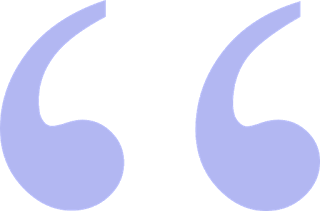 Intelligence is a step closer to wisdom which transcends philosophy as well as psychology. Whether someone is “intelligent” or not depends entirely on what you are asking them to accomplish with their brain.The verb “discern” simply means to detect with the sense.Critical THinking is a crucial thought process to see underneath the symptoms and dig into root causes.Decision wisdom is about making a sound judgment via inquisitiveness, informativeness, and intelligence. A high “EQ” mind has gravitas and maintains the composure whatever be the situation - either being glorified or vilified.Systems Thinker shapes a worldview based on the realization of interconnectedness. Judgmental Intelligence is the combination of multiple intelligence such as IQ, EQ, as well as learning ability, mental agility, and curiosity.To put simply, we are what we think of.A self-awareness mind continues to practice reflective thinking.True culture wisdom springs from personality, curiosity, education, and appreciation for the diversity of thoughts and characters.A strategic thinker always “keeps the end in mind.” Lack of knowledge is circumstantial; poor manner is forgivable. But superficiality or lack of in-depth understanding is often intolerable and creates more problems in the world.The quality of assessors is important to the quality of assessment result.Hire mindset, build capability, train for skill.One needs to understand that character oozes out of, thought processes, expressions, actions, and so on so forth.
Intelligence is a step closer to wisdom which transcends philosophy as well as psychology. Whether someone is “intelligent” or not depends entirely on what you are asking them to accomplish with their brain.The verb “discern” simply means to detect with the sense.Critical THinking is a crucial thought process to see underneath the symptoms and dig into root causes.Decision wisdom is about making a sound judgment via inquisitiveness, informativeness, and intelligence. A high “EQ” mind has gravitas and maintains the composure whatever be the situation - either being glorified or vilified.Systems Thinker shapes a worldview based on the realization of interconnectedness. Judgmental Intelligence is the combination of multiple intelligence such as IQ, EQ, as well as learning ability, mental agility, and curiosity.To put simply, we are what we think of.A self-awareness mind continues to practice reflective thinking.True culture wisdom springs from personality, curiosity, education, and appreciation for the diversity of thoughts and characters.A strategic thinker always “keeps the end in mind.” Lack of knowledge is circumstantial; poor manner is forgivable. But superficiality or lack of in-depth understanding is often intolerable and creates more problems in the world.The quality of assessors is important to the quality of assessment result.Hire mindset, build capability, train for skill.One needs to understand that character oozes out of, thought processes, expressions, actions, and so on so forth.Follow us at: @Pearl_Zhu
Published on August 19, 2016 23:19
"CIO Master" Book Tuning XXXXXXXX: Digital IT: From the Lubricant of a Mechanical Business to the Fertilizer of a Living Organization
IT is like the fertilizer to the business soil for enriching workplace and catalyzing business growth.
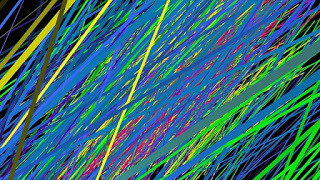 At the industrial age, an organization is like a mechanical system, business management applies the reductionist’approaches and practices to improving its efficiency, and IT is the lubricant to the business machine, keep it spinning. At the dawn of the Digital Era, with increasing speed of changes, and the digital nature of hyper-connectivity and interdependence, a business today is more like a living system, needs to keep growing, adapt to environmental changes. Would IT be like the fertilizer to enrich workplace and catalyze business growth?
At the industrial age, an organization is like a mechanical system, business management applies the reductionist’approaches and practices to improving its efficiency, and IT is the lubricant to the business machine, keep it spinning. At the dawn of the Digital Era, with increasing speed of changes, and the digital nature of hyper-connectivity and interdependence, a business today is more like a living system, needs to keep growing, adapt to environmental changes. Would IT be like the fertilizer to enrich workplace and catalyze business growth?
An organization is an organic system: it will be organized as an organic system, with cells that have a function, an infrastructure for input and output and for signaling. Increasingly, enterprises find themselves enmeshed in "ecosystems," whether they like it or not. For the most part, while they can influence and get influenced by these "ecosystems," they have limited "control" over these ecosystems. Hence, to improve business effectiveness and agility, you will eventually break down the hierarchical structure of the organization. But to do so, you must replace the "glue" of the hierarchy with some “soft element” of the organization, its mission, the deeply held core values and the vision of the future it is creating. The principles as a compass will guide all levels of the organization to operate more like the human body operates with the cells (employees) and organs (Dept) of the organization being able to make the decision in a very organic relationship with its environment. IT will be like the fertilizer to the business soil for enriching workplace and catalyzing business growth. Software and hardware by themselves will never make a profit if a company’s products, people, and processes are not good and strong enough to compete in the marketplace, and make continuous improvement to meet marketing needs and adapt to environmental changes.
The digital organizations embrace Empowerment, Enablement, and Enlightening. IT is like the fertilizer to keep the working place enriched with these three “E” characteristics because it is at the unique position to oversee underlying business processes, IT has become new capability enablers at higher-change organizations that compete on product/service differentiation. IT enables immediate or timely information access to help people make effective decisions, also generate information necessary to perform a range of business tasks/ functions, all of which require collective human capabilities which are a subset of business capability to perform some part of the action / process. IT also catalyzes business innovation to enlighten customers. Autocratic digital enterprises are limited by their DNA to take benefit of such ecosystems, and IT can help to fine tune its DNA -the culture for accelerating changes and business transformation.
 IT is also shifting from bits, bytes, and lights to information, intelligence, Innovation, Integration, Improvement, Interface: IT is only increasing in importance and relevance with each passing day. The numerous perceptions of IT guide business towards the right direction and to deliver services / solutions that address concerns for TCO and future agility. The purpose of the business is to create customers. Organizations keep sowing the seeds to grow more customers and reap the business benefit, IT is like the fertilizer to make it happen, not through serendipity, but through scientific management. Now technology can improve every touch point in customer intimacy, it provides a significant opportunity for IT to influence customer experience directly. Improve enterprise revenue through better customer loyalty. Just like the nature ecosystem, the business ecosystem is also about balance, the two most basic systemic structures are the balancing cycle and the growth cycle; and their emergent characteristics just happen to be balance and growth, which would imply that any system must have emergent characteristics, an effective IT would maintain both cycles well via adjust its speed accordingly.
IT is also shifting from bits, bytes, and lights to information, intelligence, Innovation, Integration, Improvement, Interface: IT is only increasing in importance and relevance with each passing day. The numerous perceptions of IT guide business towards the right direction and to deliver services / solutions that address concerns for TCO and future agility. The purpose of the business is to create customers. Organizations keep sowing the seeds to grow more customers and reap the business benefit, IT is like the fertilizer to make it happen, not through serendipity, but through scientific management. Now technology can improve every touch point in customer intimacy, it provides a significant opportunity for IT to influence customer experience directly. Improve enterprise revenue through better customer loyalty. Just like the nature ecosystem, the business ecosystem is also about balance, the two most basic systemic structures are the balancing cycle and the growth cycle; and their emergent characteristics just happen to be balance and growth, which would imply that any system must have emergent characteristics, an effective IT would maintain both cycles well via adjust its speed accordingly.
Regardless how shall you describe the importance of IT, the point is that IT needs to be reinvented to achieve its own potential and help the business maximize performance not only for today but for the future? IT shouldn’t just keep the bottom line, but focus on the top line business growth and innovation, also make those invisible “soft” business elements more tangible and measurable, hardening the soft, to become a changing organization in making a digital leap.
CIO Master Order Link on Amazon CIO Master Ordre Link on Barner & Noble CIO Master Order Link On IBooks “CIO Master” Book Preview Quote Collection III “CIO Master” Book Preview Quote Collection II “CIO Master” Book Preview Quote Collection I, Slideshare Presentation “CIO Master” Book Preview Conclusion Running IT as Digital Transformer “CIO Master” Book Preview: Chapter 9 IT Agility “CIO Master” Book Preview: Chapter 8 Three "P"s in Running Digital IT “CIO Master” Book Preview: Chapter 7 IT Innovation Management “CIO Master” Book Preview: Chapter 6 Digital Strategy-Execution Continuum "CIO Master” Book Preview: Chapter 5 Thirteen Digital Flavored IT “CIO Master” Book Preview: Chapter 4 CIO as Talent Master Introduction “CIO Master” Book Preview: Chapter 3 “CIOs as Change Agent” Introduction “CIO Master” Book Preview: Chapter 2 “CIOs as Digital Visionary” Introduction “CIO Master” Book Preview: Chapter 1 “Twelve Digital CIO Personas” Introduction "CIO Master - Unleash the Digital Potential of IT" Introduction "CIO Master - Unleash the Digital Potential of IT" Book Preview
Follow us at: @Pearl_Zhu
 At the industrial age, an organization is like a mechanical system, business management applies the reductionist’approaches and practices to improving its efficiency, and IT is the lubricant to the business machine, keep it spinning. At the dawn of the Digital Era, with increasing speed of changes, and the digital nature of hyper-connectivity and interdependence, a business today is more like a living system, needs to keep growing, adapt to environmental changes. Would IT be like the fertilizer to enrich workplace and catalyze business growth?
At the industrial age, an organization is like a mechanical system, business management applies the reductionist’approaches and practices to improving its efficiency, and IT is the lubricant to the business machine, keep it spinning. At the dawn of the Digital Era, with increasing speed of changes, and the digital nature of hyper-connectivity and interdependence, a business today is more like a living system, needs to keep growing, adapt to environmental changes. Would IT be like the fertilizer to enrich workplace and catalyze business growth?
An organization is an organic system: it will be organized as an organic system, with cells that have a function, an infrastructure for input and output and for signaling. Increasingly, enterprises find themselves enmeshed in "ecosystems," whether they like it or not. For the most part, while they can influence and get influenced by these "ecosystems," they have limited "control" over these ecosystems. Hence, to improve business effectiveness and agility, you will eventually break down the hierarchical structure of the organization. But to do so, you must replace the "glue" of the hierarchy with some “soft element” of the organization, its mission, the deeply held core values and the vision of the future it is creating. The principles as a compass will guide all levels of the organization to operate more like the human body operates with the cells (employees) and organs (Dept) of the organization being able to make the decision in a very organic relationship with its environment. IT will be like the fertilizer to the business soil for enriching workplace and catalyzing business growth. Software and hardware by themselves will never make a profit if a company’s products, people, and processes are not good and strong enough to compete in the marketplace, and make continuous improvement to meet marketing needs and adapt to environmental changes.
The digital organizations embrace Empowerment, Enablement, and Enlightening. IT is like the fertilizer to keep the working place enriched with these three “E” characteristics because it is at the unique position to oversee underlying business processes, IT has become new capability enablers at higher-change organizations that compete on product/service differentiation. IT enables immediate or timely information access to help people make effective decisions, also generate information necessary to perform a range of business tasks/ functions, all of which require collective human capabilities which are a subset of business capability to perform some part of the action / process. IT also catalyzes business innovation to enlighten customers. Autocratic digital enterprises are limited by their DNA to take benefit of such ecosystems, and IT can help to fine tune its DNA -the culture for accelerating changes and business transformation.
 IT is also shifting from bits, bytes, and lights to information, intelligence, Innovation, Integration, Improvement, Interface: IT is only increasing in importance and relevance with each passing day. The numerous perceptions of IT guide business towards the right direction and to deliver services / solutions that address concerns for TCO and future agility. The purpose of the business is to create customers. Organizations keep sowing the seeds to grow more customers and reap the business benefit, IT is like the fertilizer to make it happen, not through serendipity, but through scientific management. Now technology can improve every touch point in customer intimacy, it provides a significant opportunity for IT to influence customer experience directly. Improve enterprise revenue through better customer loyalty. Just like the nature ecosystem, the business ecosystem is also about balance, the two most basic systemic structures are the balancing cycle and the growth cycle; and their emergent characteristics just happen to be balance and growth, which would imply that any system must have emergent characteristics, an effective IT would maintain both cycles well via adjust its speed accordingly.
IT is also shifting from bits, bytes, and lights to information, intelligence, Innovation, Integration, Improvement, Interface: IT is only increasing in importance and relevance with each passing day. The numerous perceptions of IT guide business towards the right direction and to deliver services / solutions that address concerns for TCO and future agility. The purpose of the business is to create customers. Organizations keep sowing the seeds to grow more customers and reap the business benefit, IT is like the fertilizer to make it happen, not through serendipity, but through scientific management. Now technology can improve every touch point in customer intimacy, it provides a significant opportunity for IT to influence customer experience directly. Improve enterprise revenue through better customer loyalty. Just like the nature ecosystem, the business ecosystem is also about balance, the two most basic systemic structures are the balancing cycle and the growth cycle; and their emergent characteristics just happen to be balance and growth, which would imply that any system must have emergent characteristics, an effective IT would maintain both cycles well via adjust its speed accordingly.
Regardless how shall you describe the importance of IT, the point is that IT needs to be reinvented to achieve its own potential and help the business maximize performance not only for today but for the future? IT shouldn’t just keep the bottom line, but focus on the top line business growth and innovation, also make those invisible “soft” business elements more tangible and measurable, hardening the soft, to become a changing organization in making a digital leap.
CIO Master Order Link on Amazon CIO Master Ordre Link on Barner & Noble CIO Master Order Link On IBooks “CIO Master” Book Preview Quote Collection III “CIO Master” Book Preview Quote Collection II “CIO Master” Book Preview Quote Collection I, Slideshare Presentation “CIO Master” Book Preview Conclusion Running IT as Digital Transformer “CIO Master” Book Preview: Chapter 9 IT Agility “CIO Master” Book Preview: Chapter 8 Three "P"s in Running Digital IT “CIO Master” Book Preview: Chapter 7 IT Innovation Management “CIO Master” Book Preview: Chapter 6 Digital Strategy-Execution Continuum "CIO Master” Book Preview: Chapter 5 Thirteen Digital Flavored IT “CIO Master” Book Preview: Chapter 4 CIO as Talent Master Introduction “CIO Master” Book Preview: Chapter 3 “CIOs as Change Agent” Introduction “CIO Master” Book Preview: Chapter 2 “CIOs as Digital Visionary” Introduction “CIO Master” Book Preview: Chapter 1 “Twelve Digital CIO Personas” Introduction "CIO Master - Unleash the Digital Potential of IT" Introduction "CIO Master - Unleash the Digital Potential of IT" Book Preview
Follow us at: @Pearl_Zhu
Published on August 19, 2016 23:16
Digital IT: From the Lubricant of a Mechanical Business to the Fertilizer of a Living Organization
 At the industrial age, an organization is like a mechanical system, business management applies the reductionist’ practices to improve its efficiency, and IT is the lubricant to the business machine, keep it spinning. At the dawn of the Digital Era, with increasing speed of changes, hyper-connectivity and interdependence, a business today is more like a living system, needs to keep growing, adapt to environmental changes. Would IT be like the fertilizer to enrich workplace and catalyze business growth?
At the industrial age, an organization is like a mechanical system, business management applies the reductionist’ practices to improve its efficiency, and IT is the lubricant to the business machine, keep it spinning. At the dawn of the Digital Era, with increasing speed of changes, hyper-connectivity and interdependence, a business today is more like a living system, needs to keep growing, adapt to environmental changes. Would IT be like the fertilizer to enrich workplace and catalyze business growth?
An organization is an organic system: it will be organized as an organic system, with cells that have a function, an infrastructure for input and output and for signaling. Increasingly, enterprises find themselves enmeshed in "ecosystems," whether they like it or not. For most part, while they can influence and get influenced by these "ecosystems," they have limited "control" over these ecosystems. Hence, to improve business effectiveness and agility, you will eventually break down the hierarchical structure of organization. But to do so, you must replace the "glue" of the hierarchy with some “soft element” of the organization, its mission, the deeply held core values and the vision of the future it is creating. The principles as compass, will guide all levels of the organization to operate more like the human body operates with the cells (employees) and organs (Dept) of the organization being able to make decision in a very organic relationship with its environment. IT will be like the fertilizer to the business soil to keep it growing. Software and hardware by themselves will never make a profit if a company’s products, people, and processes are not good and strong enough to compete in the marketplace, and make continuous improvement to meet marketing needs and adapt to environmental changes.
The digital organizations embraces Empowerment, Enablement and Enlightening. IT is like the fertilizer to keep the working place enriched with these three “Es” characteristics, because it is at the unique position to oversee underlying business processes, IT has become new capability enablers at higher-change organizations that compete on product/service differentiation. IT enables immediate or timely information access to help people make effective decisions, also generate information necessary to perform a range of business tasks/ functions, all of which require collective human capabilities which are a subset of business capability to perform some part of the action / process. IT also catalyzes business innovation to enlighten customers. Autocratic digital enterprises are limited by their DNA to take benefit of such ecosystems, and IT can help to fine tune its DNA -culture for accelerating changes and business transformation.
 IT is also shifting from bits, bytes and lights to information, intelligence, Innovation, Integration, Improvement, Interface: IT is only increasing in importance and relevance with each passing day. The numerous perceptions of IT guide business towards the right direction and to deliver services / solutions that address concerns for TCO and future agility. The purpose of the business is to create customers. Organizations keep sowing the seeds to grow more customers and reap business benefit, IT is like the fertilizer to make it happen. Now technology can improve every touch point in customer intimacy, it provides a significant opportunity for IT to influence customer experience directly. Improve enterprise revenue through better customer loyalty. Just like the nature ecosystem, the business ecosystem is also about balance, the two most basic systemic structures are the balancing cycle and the growth cycle; and their emergent characteristics just happen to be balance and growth, which would implying that any system must have emergent characteristics, an effective IT would maintain both cycles well.
IT is also shifting from bits, bytes and lights to information, intelligence, Innovation, Integration, Improvement, Interface: IT is only increasing in importance and relevance with each passing day. The numerous perceptions of IT guide business towards the right direction and to deliver services / solutions that address concerns for TCO and future agility. The purpose of the business is to create customers. Organizations keep sowing the seeds to grow more customers and reap business benefit, IT is like the fertilizer to make it happen. Now technology can improve every touch point in customer intimacy, it provides a significant opportunity for IT to influence customer experience directly. Improve enterprise revenue through better customer loyalty. Just like the nature ecosystem, the business ecosystem is also about balance, the two most basic systemic structures are the balancing cycle and the growth cycle; and their emergent characteristics just happen to be balance and growth, which would implying that any system must have emergent characteristics, an effective IT would maintain both cycles well.
Regardless how shall you describe the importance of IT, the point is that IT needs to be reinvented to achieve its own potential and help the business maximize performance not only for today, but for the future. IT shouldn’t just keep the bottom line, but focus on the top line business growth and innovation, also make those invisible “soft” business elements more tangible and measurable, hardening the soft, and become a changing organization for make a digital leap.
Follow us at: @Pearl_Zhu
Published on August 19, 2016 23:16
August 18, 2016
The Weekly Insight of the “Future of CIO” 8/19/2016
 The “Future of CIO” Blog has reached 1.5 million page views with 3000+ blog posting in 59+ different categories of leadership, management, strategy, digitalization, change/talent, etc. The content richness is not for its own sake, but to convey the vision and share the wisdom. Here is the weekly insight about digital leadership, IT Management, and Talent Management.
The “Future of CIO” Blog has reached 1.5 million page views with 3000+ blog posting in 59+ different categories of leadership, management, strategy, digitalization, change/talent, etc. The content richness is not for its own sake, but to convey the vision and share the wisdom. Here is the weekly insight about digital leadership, IT Management, and Talent Management.
The Weekly Insight of the “Future of CIO” 8/19/2016 How Responsive Could Digital IT Be? Digital is all about change with continuous disruptions and exponential information flow, a responsive IT means a lot of things for the business’s digital transformation: speed, innovation, agility, ambidexterity, modernization, intelligence, value creation, and maturity, etc. How responsive could IT be in order to ride learning curves, keep the pace of rapid changes, and accelerate digital transformation of the business?
Digitizing Boardroom: The multifaceted Aspects of Digital-Ready Boards” Book Preview Modern corporate boards play significant roles in guiding businesses toward the right direction and achieve expected business results. Due to the “VUCA” characteristics -Complexity, Uncertainty, Ambiguity and Velocity of the Digital Era, the directorship in any organization must have the agility to adapt to changes, and build abilities to advise, inspire and motivate a group of people toward accomplishing shared visions and goals. If a Board is to fulfill its fiduciary responsibilities to its stakeholders, it needs to take a professional and systematic approach for assessing strategy, prioritizing agendas, advising changes, overseeing risks and keeping track of business performance via efficient tools. BoDs perhaps do not always participate in developing business strategy, but the Board needs to determine suitability, adequacy, viability, and sustainability of the organization in advances?
The New Book “Talent Maser- 199 Questions to See Through Talent from Different Angles” Introduction: We live in the dawn of the Digital Era with increasing speed of changes and overwhelming information flow, the knowledge cycle is significantly shortened, and there are huge skill gaps in the workplace as well. Growth mindsets, new skills, and digital capabilities are needed every day. So who are digital leaders and professionals today, how shall you define digital professionalism, leadership competency, how can you identify talent gaps, differentiate great talent from mediocre, and what are fresh perspectives of digital professional quality?
Three Capabilities to Accelerate IT as Digital Growth Engin: Information and technology are pervasive, business transformation or any business initiatives today nearly always involves some form of technology implementation and information-bases insight; IT touches both hard business processes and soft human behaviors. Hence, forward-thinking companies have to empower their IT organizations to drive digital transformations, which enterprise capabilities should IT build to deal with the emergent digital complexity with the new characteristics such as hyper-connectivity, hyper-density, and hyper-dynamism, and become a growth engine of a high-mature digital business?
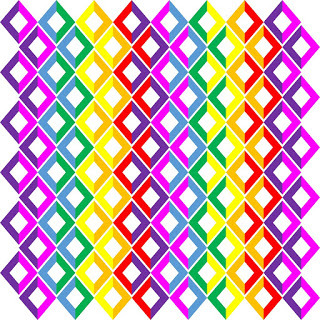 Three Aspects in Running a Hybrid IT and Digital Organization: We live in the world with both “old” and “new,” embracing digital is inevitable as that is now part of the reality. In order to lead change and drive digital transformation, IT should combine the old way to do things, and the new way to explore, the next practices and the best practices, take the balance of traditional hierarchy and flatter structure; keep the lights on,” and “doing more with innovation.” Either from management, technology or talent perspective, Is HYBRID the right way to move forward with the right speed ?Blogging is not about writing, but about thinking and innovating the new ideas; it’s not just about WHAT to say, but about WHY to say, and HOW to say it. It reflects the color and shade of your thought patterns, and it indicates the peaks and curves of your thinking waves. Unlike pure entertainment, quality and professional content takes time for digesting, contemplation and engaging, and therefore, it takes the time to attract the "hungry minds" and the "deep souls." It’s the journey to amplify diverse voices and deepen digital footprints, and it's the way to harness your innovative spirit.
Three Aspects in Running a Hybrid IT and Digital Organization: We live in the world with both “old” and “new,” embracing digital is inevitable as that is now part of the reality. In order to lead change and drive digital transformation, IT should combine the old way to do things, and the new way to explore, the next practices and the best practices, take the balance of traditional hierarchy and flatter structure; keep the lights on,” and “doing more with innovation.” Either from management, technology or talent perspective, Is HYBRID the right way to move forward with the right speed ?Blogging is not about writing, but about thinking and innovating the new ideas; it’s not just about WHAT to say, but about WHY to say, and HOW to say it. It reflects the color and shade of your thought patterns, and it indicates the peaks and curves of your thinking waves. Unlike pure entertainment, quality and professional content takes time for digesting, contemplation and engaging, and therefore, it takes the time to attract the "hungry minds" and the "deep souls." It’s the journey to amplify diverse voices and deepen digital footprints, and it's the way to harness your innovative spirit.Follow us at: @Pearl_Zhu
Published on August 18, 2016 23:04



